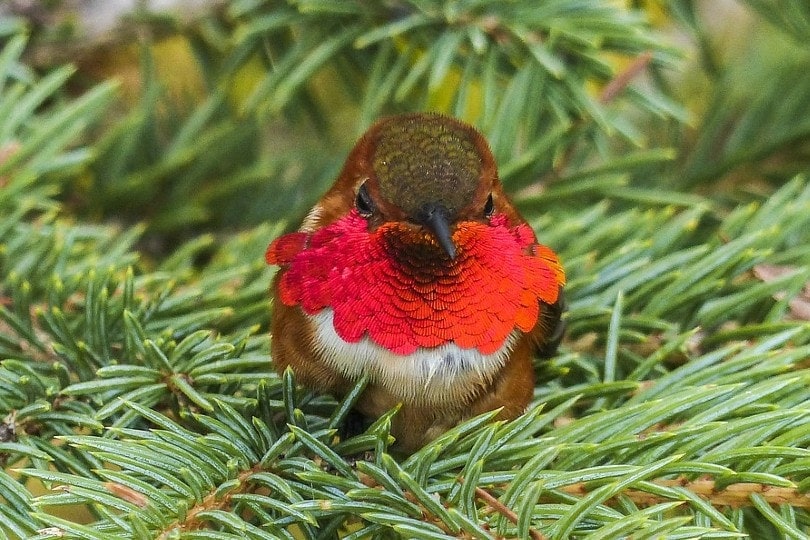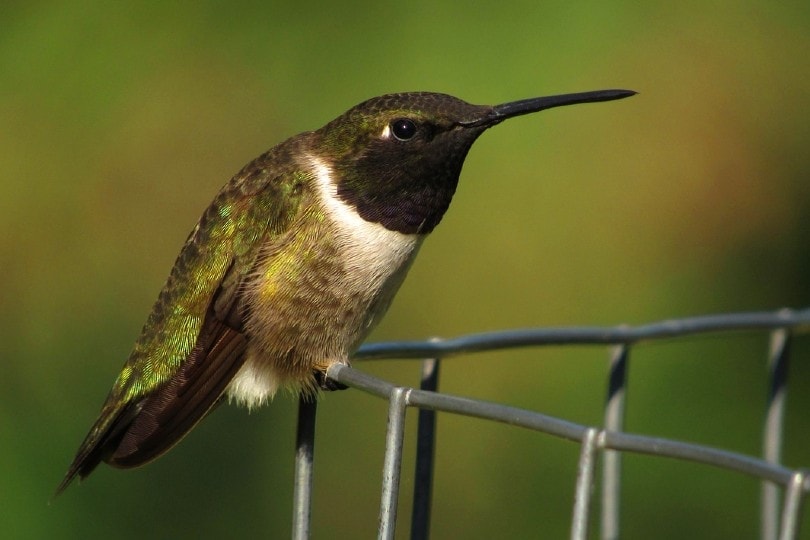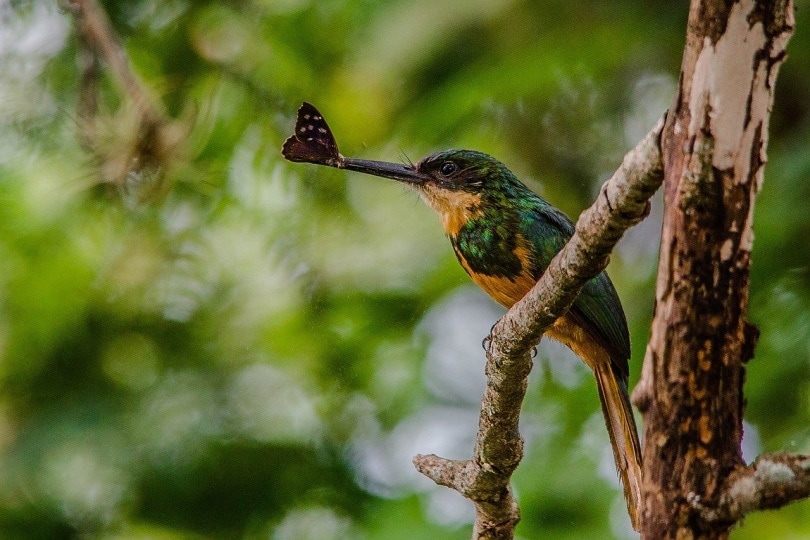Do Birds Have Penises? The Surprising Answer!
Last Updated on

According to ornithologists, there are approximately 10,000 different bird species in the world. And only about 3% of them have penises. The remaining 97% have something called a cloaca, which is basically an orifice that they rely on for mating, reproducing, and excreting.
Just like other animals, the 3% that have penises vary in shapes and sizes. Some of them look conical in shape, while others resemble a corkscrew. Some are covered with feathers, and others are concealed using small filaments.
For the record, penises are just as important to birds as they are to humans. They often use them for penetrative sex, but instead of filling them with blood to erect, they do so via the lymphatic fluid. However, since the pressure exerted by the fluid is relatively lower, their penises don’t stay erect for long.
Why do most birds lack penises?
The absence of this reproductive organ has been caused by a specific physical and functional heredity unit known as the Bmp4 gene (Bone Morphogenetic Protein 4).
This gene is what’s responsible for the growth and development of a bird’s limbs, bills, muscles, and even bones. However, when it’s time to support the growth of the penis, it initiates the apoptosis process, meaning, every cell that’s supposed to facilitate the development of the penis finds itself in a position where it has to self-destruct.
If birds never had the Bmp4 gene, they would certainly be able to grow penises. And this is a well-known fact because every bird embryo that has been studied has confirmed that they actually do have phallic tubercle—tissue that often grows to become a reproductive organ.

Is the Bone Morphogenetic Protein 4 gene hereditary?
As long as the parent bird has the Bmp4 gene, the male offspring will also have it. The way reproduction works in birds is the same way it does in most animals. The offspring will inherit all the sexual traits from the father, including the protein gene. Therefore, if the dad doesn’t have a penis, the son won’t grow one, either. But if he had something that looked like a corkscrew, the son would also have one that’s the same size and shape. It’s that simple.
Is the absence of a penis in birds evolutionary?
There are a number of theories that have tried to explain this phenomenon, but we still haven’t found one that’s as coherent as we would have liked. Some experts argue that penises were too heavy for birds to carry around, especially while flying, and that’s why they had to go. Others believe that most of the species found them useless, save for those that prefer copulating underwater, or on the ground. The fact that penetrative sex usually leaves these birds too exposed could also be a factor.
As we said, it’s all speculation at this point.
How do “penis-less” birds have sex?
The cloaca is something that resembles a chamber with a small gap. It’s through that gap that the reproductive organs release eggs or sperm while the birds are mating.
Most of the time, the cloaca serves as an opening meant to expel urinary or digestive waste. But during mating season, it starts swelling and protrudes outside the body. These changes will be felt by both the male and female birds, and the whole process will be initiated.
The sperm are unloaded into the female’s cloaca and slowly travel up the chamber until they get to the eggs. That’s where fertilization takes place.
Even though this process is somehow similar to what we’re used to seeing, avian insemination never happens in different positions. It’s always on the ground, where the male gets an opportunity to jump on top of the female. The female will then respond by moving her tail to the side to expose her cloaca. Once the male’s back is firmly arched, he’ll start rubbing his cloaca against hers, until all his sperm is successfully deposited.
By the way, the females always choose the males based on their physical characteristics. They know randomly picking mates would expose them to the risk of “bearing” kids that grow up to have unattractive physical traits.

Do birds get pregnant?
Birds don’t get pregnant the same way mammals do. They lay eggs after they’ve been fertilized by the males.
Researchers believe that the period between fertilization and the time the eggs are ready to be laid is 24 to 48 hours. They’ve also concluded that there’s really no significant growth during this period, other than a few cells multiplying randomly.
The incubation process is what actually jumpstarts the exponential growth and development of the cells. The fertilized embryo quickly multiplies into numerous cells, which constitute different tissues. And while all this is happening, everything is suspended in a liquid commonly known as the egg white.
Once a baby bird is ready to leave the egg, it will break the shell from within, and wait for the mother to start feeding it.
Can birds lay infertile eggs?
It’s not easy to find a wild bird laying infertile eggs because mating is a requirement in the process. If they don’t find a partner, they won’t lay any eggs during that breeding season. The same can’t be said about domesticated birds though, seeing as they have hormones that could easily trigger the process. That’s why you find humans consuming chicken eggs that haven’t been fertilized.
Why don’t birds give birth the same way mammals do?
This is one of those questions that even scientists can’t fully answer. All they could come up with is that egg-laying is a less complicated process that enables the female bird to go about its business without endangering the embryo. Assuming it’s a predator, it won’t have to hunt prey while carrying several other undeveloped birds in its belly.
Some scientists also believe laying eggs was evolutionary, as birds needed to have more babies. That’s why some birds can lay up to 15 eggs in a clutch.

- Related Read: What Birds Lay Blue Eggs and Why Does It Happen?

Conclusion
We don’t know why some birds have penises while others don’t. It could be a side-effect of the protein gene or just an evolutionary process. All we know is; those that aren’t blessed with penises are able to travel long distances, fly for several hours, and are relatively faster. So maybe it’s not a bad thing.
Featured Image Credit: ArtTower, Pixabay
About the Author Robert Sparks
Robert’s obsession with all things optical started early in life, when his optician father would bring home prototypes for Robert to play with. Nowadays, Robert is dedicated to helping others find the right optics for their needs. His hobbies include astronomy, astrophysics, and model building. Originally from Newark, NJ, he resides in Santa Fe, New Mexico, where the nighttime skies are filled with glittering stars.
Related Articles:
10 Types of Hummingbirds in Arkansas (With Pictures)
8 Types of Hummingbirds in Nebraska (With Pictures)
5 Types of Hummingbirds in Idaho (With Pictures)
3 Types of Hummingbirds in Mississippi (With Pictures)
8 Types of Hummingbirds in Kansas (With Pictures)
5 Types of Hummingbirds in West Virginia (With Pictures)
5 Types of Hummingbirds in Ohio (With Pictures)
Where Do Nuthatches Nest? Nuthatch Nesting Habits Explained
